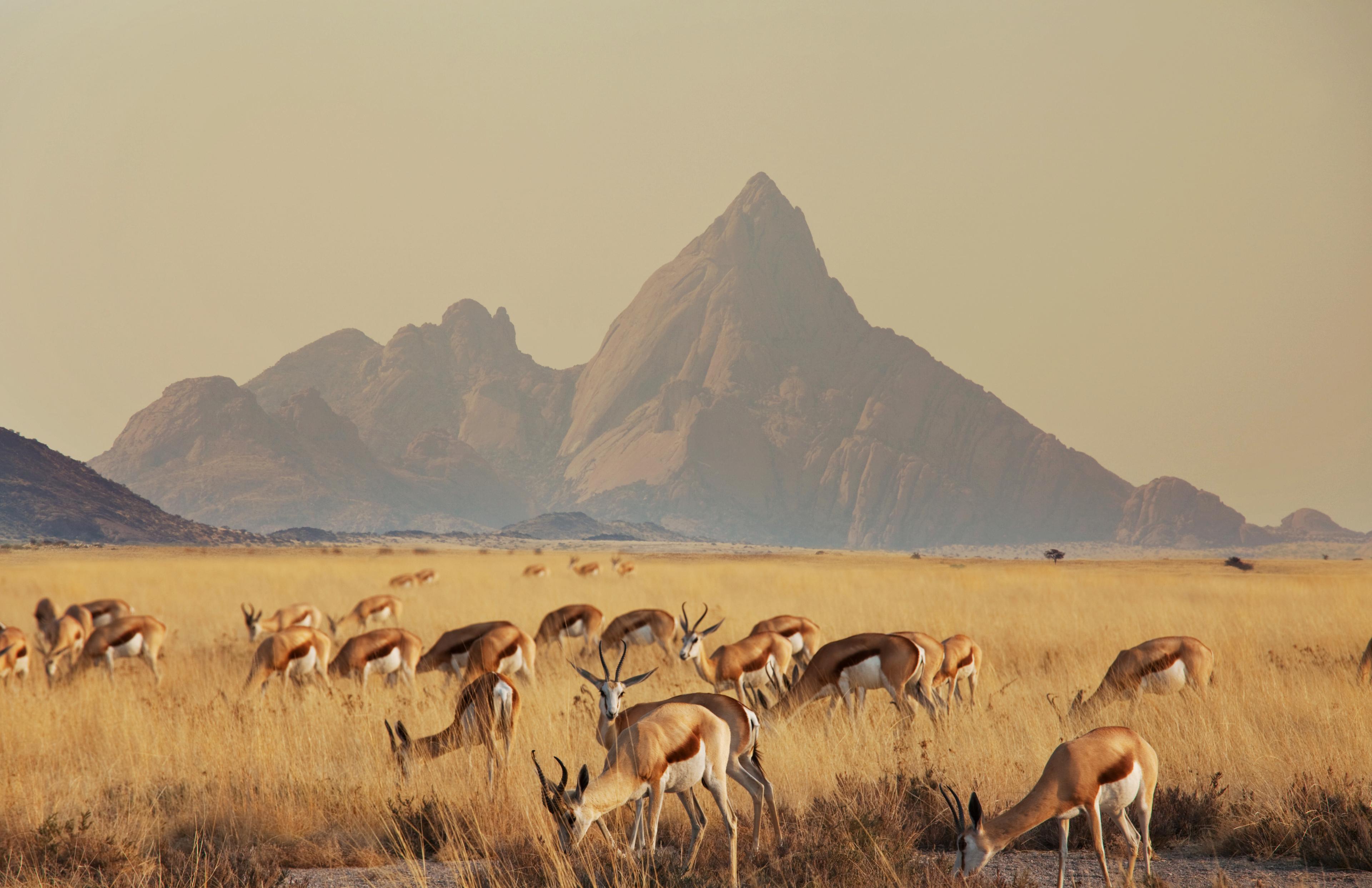Wildlife Encounters: The Surprising Biodiversity of Desert Safaris
Deserts may appear barren at first glance, but these extreme environments host remarkably diverse ecosystems filled with specially adapted plants and animals. A desert safari offers unique opportunities to witness this surprising biodiversity and learn about the fascinating adaptations that allow life to thrive in one of Earth's most challenging habitats.
Desert Adaptations: Nature's Ingenious Solutions
Before exploring specific wildlife, it's worth understanding the remarkable adaptations that make desert survival possible:
Water Conservation
Desert organisms have evolved extraordinary mechanisms to conserve water:
- Many desert animals never drink water, obtaining all moisture from their food
- Specialized kidneys produce highly concentrated urine to minimize water loss
- Nocturnal lifestyles help animals avoid water loss during hot days
- Waxy coatings on plants reduce evaporation
- Succulent plants store water in specialized tissues
Temperature Regulation
Extreme temperature fluctuations require specialized adaptations:
- Burrowing behavior provides escape from surface temperatures
- Large ears in desert foxes and rabbits dissipate heat
- Light-colored fur or feathers reflect sunlight
- Estivation (summer dormancy) helps animals survive the hottest periods
- Plants with small leaves reduce surface area exposed to sun
Specialized Structures
Physical adaptations enable desert survival:
- Long roots allow plants to access deep groundwater
- Spines protect cacti from water-seeking animals
- Specialized scales prevent water loss in reptiles
- Humps store fat (not water) in camels, providing energy reserves
Mammals: Desert Specialists
Arabian Oryx
Once extinct in the wild, the Arabian oryx has been successfully reintroduced to several desert regions. These majestic antelope with distinctive straight horns can detect rainfall from great distances and will travel to areas where vegetation might sprout. Their white coat reflects sunlight, and they can raise their body temperature several degrees before needing to sweat, conserving precious water.
Desert Foxes
The fennec fox, with its oversized ears that dissipate heat, is perfectly adapted to desert life. These nocturnal hunters have excellent hearing that allows them to locate prey beneath the sand. Other fox species you might encounter include the Rüppell's fox and the Arabian red fox, all masters of desert survival.
Gazelles
Various gazelle species inhabit desert regions, including the dainty mountain gazelle and the sand gazelle. These swift antelopes can reach speeds of 60 mph and can survive without drinking water, obtaining moisture from the plants they consume.
Camels
No discussion of desert wildlife would be complete without mentioning camels. Whether the one-humped dromedary or two-humped Bactrian camel, these "ships of the desert" display remarkable adaptations:
- Can drink up to 30 gallons of water in one session
- Oval-shaped red blood cells that continue flowing when dehydrated
- Thick eyelashes and closable nostrils to protect against sandstorms
- Wide feet that prevent sinking into sand
Reptiles: Masters of Desert Survival
Desert Monitor Lizards
These large, impressive reptiles can be spotted basking in the morning sun before temperatures rise too high. They're efficient predators, feeding on smaller reptiles, birds' eggs, and occasionally small mammals.
Vipers and Other Snakes
Several snake species have adapted to desert life, including the saw-scaled viper and sand boa. Many have developed sidewinding locomotion to move efficiently across loose sand and can remain buried with only their eyes exposed, waiting for prey.
Spiny-Tailed Lizards (Dhubs)
These herbivorous lizards store fat in their tails for times of scarcity and can change color to regulate temperature – darker to absorb heat in the morning, lighter to reflect heat during the day.
Birds: Desert Flyers
Sandgrouse
These remarkable birds can fly long distances daily between nesting grounds and water sources. Male sandgrouse have specialized breast feathers that absorb water like a sponge, which they carry back to their chicks.
Desert Larks and Wheatears
Several lark species have evolved to match the color of their specific desert habitat, providing excellent camouflage. Wheatears are often spotted perching on desert shrubs, their white rumps flashing as they take flight.
Raptors
Eagles, falcons, and hawks patrol desert skies, with keen eyesight that allows them to spot prey from great heights. The cultural significance of falconry in many desert regions has helped preserve both the birds and the traditional knowledge of working with them.
Invertebrates: Small but Mighty
Scorpions
These ancient arachnids are superbly adapted to desert life, with some species able to slow their metabolism to survive on as little as one insect per year. They fluoresce under ultraviolet light, making nighttime scorpion spotting a fascinating activity on some desert safaris.
Beetles
The Namib Desert beetle has evolved a remarkable way to collect water – its textured back allows it to harvest moisture from fog. Other beetle species can be spotted leaving distinctive tracks across sand dunes.
Spiders
Several spider species have adapted to desert life, including the impressive camel spider (which is actually a solifugid, not a true spider). These fast-moving arachnids seek shade, sometimes appearing to "chase" humans who cast shadows they want to shelter in.
Plant Life: Green Survivors
Acacia Trees
With their distinctive flat-topped appearance, acacia trees are desert icons. Their deep roots access underground water, while small, waxy leaves minimize water loss. Many species have developed thorns to deter browsing animals.
Ghaf Trees
Considered the national tree of the UAE, the ghaf can survive extreme drought conditions with roots that may extend over 30 meters deep to reach groundwater.
Desert Grasses
Various grass species can remain dormant for years during drought, then spring to life within days of rainfall, completing their entire life cycle before the desert dries again.
Succulents and Cacti
These plants store water in specialized tissues, with some able to expand like accordions during rare rainy periods. Their spines serve multiple purposes: deterring predators, providing shade, and collecting dew.
Best Practices for Wildlife Viewing
To maximize your chances of wildlife encounters while minimizing your impact:
1. Dawn and dusk safaris offer the best viewing opportunities when many desert animals are active
2. Move quietly and speak in hushed tones
3. Bring binoculars to observe wildlife without approaching too closely
4. Never feed wild animals, which disrupts natural behaviors and can harm their health
5. Stay on designated tracks to minimize habitat disturbance
6. Learn to read tracks and signs – even when animals aren't visible, their footprints, burrows, and droppings tell stories
Conservation Challenges
Desert ecosystems face numerous threats:
- Habitat fragmentation from development and infrastructure
- Climate change intensifying already extreme conditions
- Overgrazing by domestic livestock
- Off-road vehicles damaging fragile habitats
- Water extraction lowering water tables that sustain vegetation
Many safari operators now incorporate conservation education into their programs, helping visitors understand these challenges and how responsible tourism can contribute to preservation efforts.
Conclusion
A desert safari offers much more than scenic landscapes and adventure activities. It provides a window into one of Earth's most specialized ecosystems, where life has evolved extraordinary strategies to thrive in extreme conditions. By approaching your safari with curiosity about these adaptations and respect for the delicate balance of desert life, you'll gain a deeper appreciation for the resilience and diversity of nature. Keep your eyes open, move quietly, and you might be rewarded with unforgettable wildlife encounters that reveal the secret life of the desert.




.jpg&w=3840&q=75)